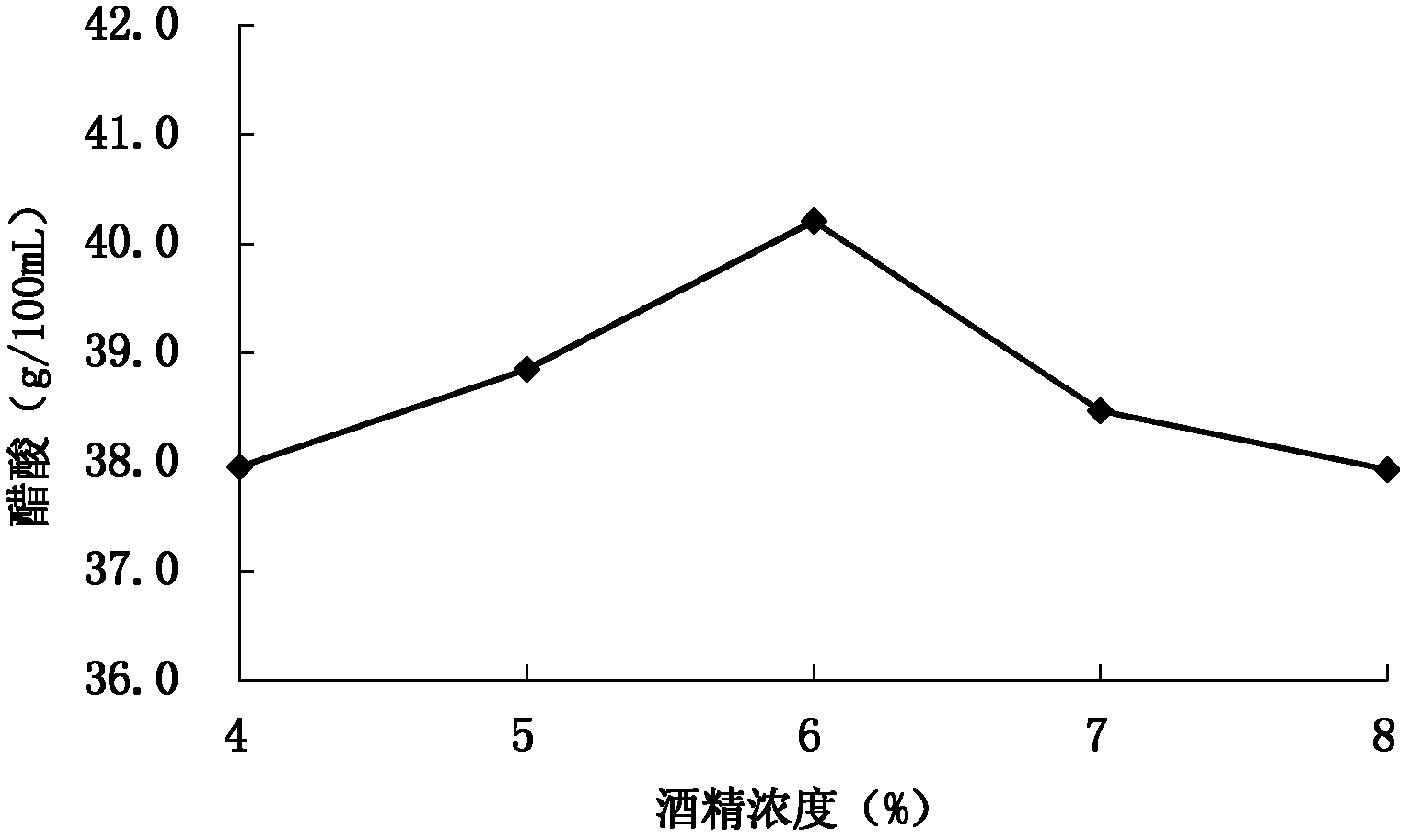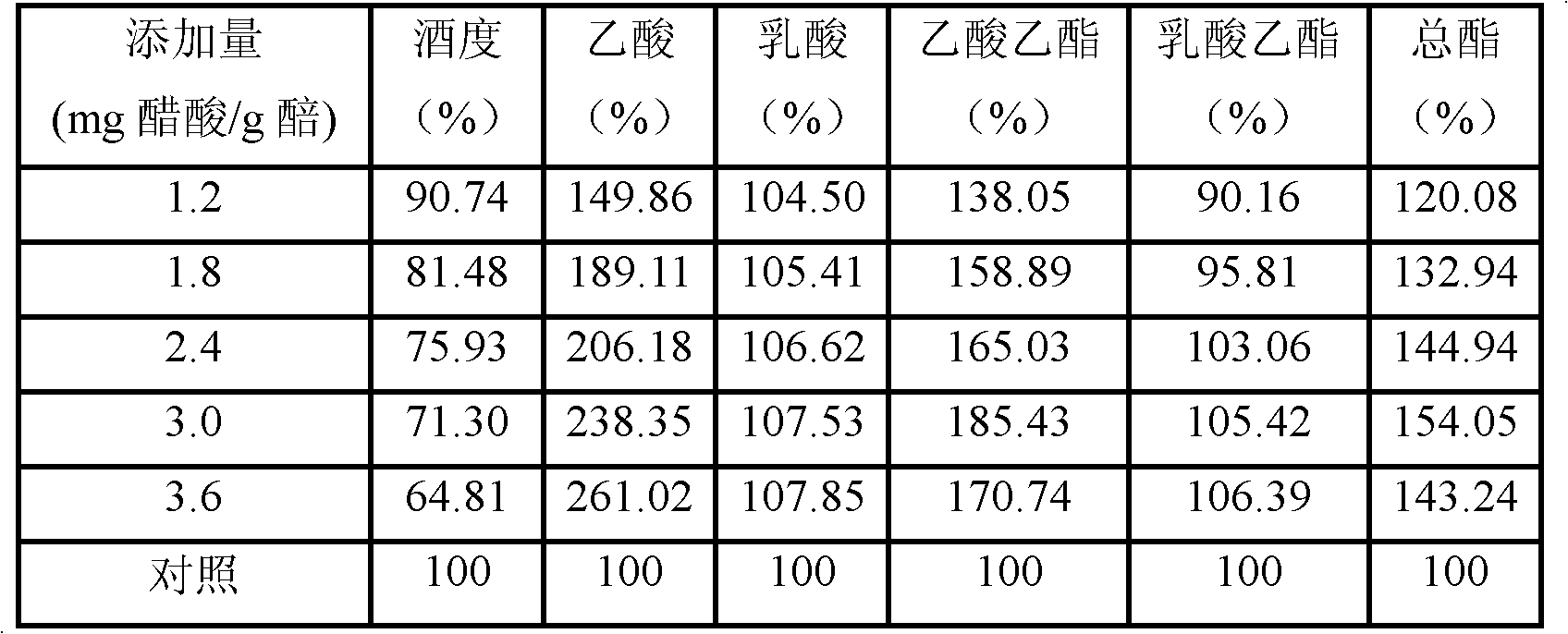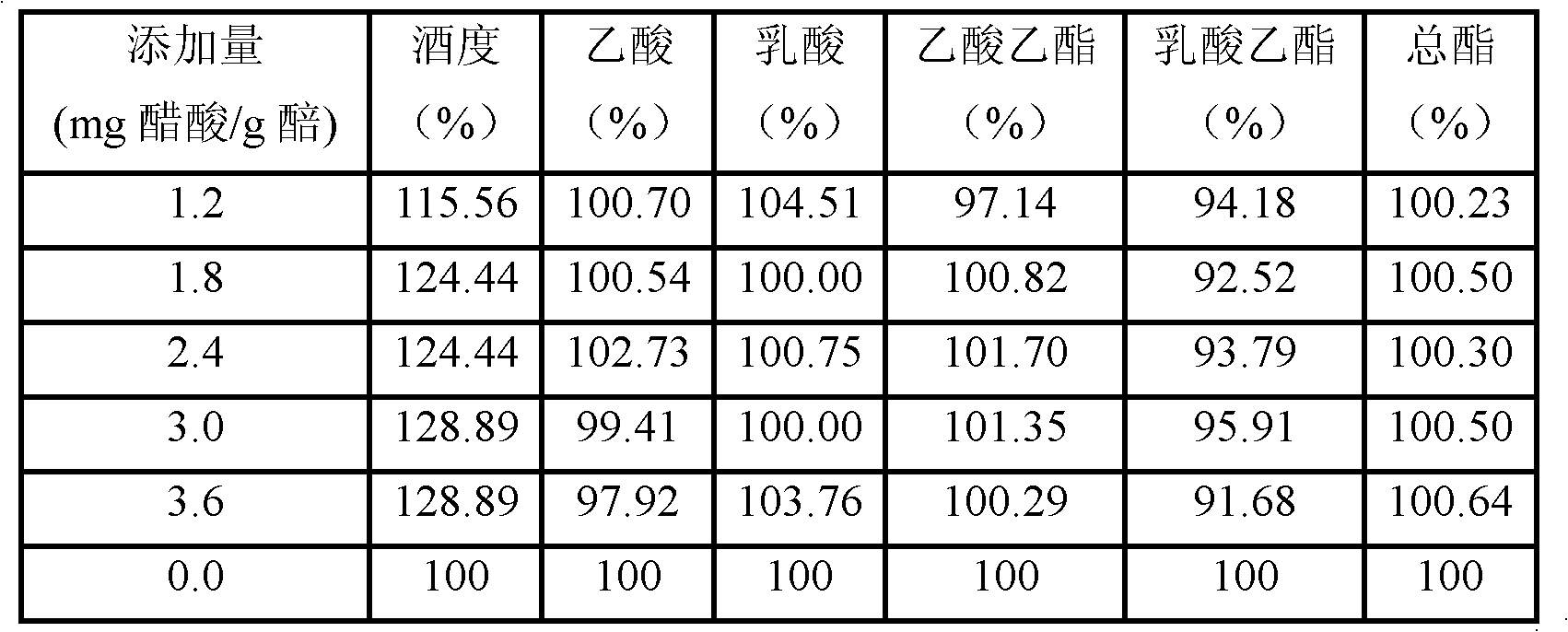Method for increasing ester-aroma substances in Fen-flavor liquor by utilizing liquor tailing
A technology of light-flavor type liquor and medium ester fragrance, which is applied in the field of liquor brewing, can solve the problems of low ethyl acetate content affecting wine fragrance, insufficient acetic acid content, etc., and achieves the effects of improving ester fragrance substances and a simple and effective process.
- Summary
- Abstract
- Description
- Claims
- Application Information
AI Technical Summary
Problems solved by technology
Method used
Image
Examples
Embodiment 1
[0022] One, the preparation of wine tail acetic acid fermentation broth:
[0023] (1) Seed cultivation: Inoculate Acetobacter pasteurianus into the seed medium, and cultivate at 30° C., 180 r / min for 24 hours. The seed medium is glucose 20g, yeast extract 15g, 25% vol wine tail 100mL, add water to 1000mL;
[0024] (2) Fermentation culture: the seed solution obtained in step (1) is inserted into the fermentation medium according to the inoculum amount of 10%, and cultivated at 30°C and 180r / min for 5-7 days to obtain the wine tail acetic acid fermentation liquid. The fermentation medium is 20g of glucose, 15g of yeast extract, 240mL of 25% vol wine tail, and add water to 1000mL.
[0025] 2. Application of wine tail acetic acid fermentation liquid in the production of Fen-flavor liquor:
[0026] (1) Sorghum crushing: choose sorghum with uniform particles, plump, less shells, and high starch content. When crushing, each grain of sorghum is crushed into 4, 6, and 8 petals. The w...
Embodiment 2
[0033] Embodiment 2: the influence of alcohol concentration on acetic acid content in the culture medium
[0034] Insert the activated Acetobacter pasteurian into the seed medium, and cultivate it at 30°C and 180r / min for 24h, then insert the seed liquid into the fermentation medium according to the inoculation amount of 10%, and adjust the amount of wine tail added (per 1000mL fermentation culture Add 25% vol wine tail 160, 200, 240, 280, 320mL respectively) to make alcohol concentration respectively 4%, 5%, 6%, 7%, 8% vol, in 30 ℃, 180r / min cultivate 5 days ( All the other unlisted conditions and processes can refer to above-mentioned embodiment 1), measure the content of acetic acid in the wine tail acetic acid fermented liquid after fermentation finishes, experimental result is as follows figure 1 shown. From figure 1 It can be seen from the figure that when the alcohol concentration in the fermentation medium is 6% vol, the acetic acid content is the highest, which is 4...
Embodiment 3
[0035] Embodiment 3: the comparison of the consumption of different wine tail acetic acid fermentation broth
[0036] Weigh the crushed sorghum, moisten the grits at high temperature, steam the material, add a measure of water, and after cooling, add 10% Daqu and wine tail acetic acid fermentation broth. , 2.4, 3.0, 3.6mg acetic acid / g unstrained spirits, mix evenly and then ferment in ceramic vats. It is fermented in ceramic vats, and after the fermentation is over, it is distilled to obtain Erslag wine. The experimental results are shown in Table 1, Table 2 and Table 3.
[0037] Table 1 Physicochemical data of slag wine
[0038]
[0039] Note: The control is the group without adding wine tail acetic acid fermentation broth; all wine samples are the average value of three repetitions.
[0040] Table 2 Physicochemical data of Erslag wine
[0041]
[0042] Note: The control is the group without adding wine tail acetic acid fermentation broth; all wine samples are the ...
PUM
 Login to View More
Login to View More Abstract
Description
Claims
Application Information
 Login to View More
Login to View More - R&D
- Intellectual Property
- Life Sciences
- Materials
- Tech Scout
- Unparalleled Data Quality
- Higher Quality Content
- 60% Fewer Hallucinations
Browse by: Latest US Patents, China's latest patents, Technical Efficacy Thesaurus, Application Domain, Technology Topic, Popular Technical Reports.
© 2025 PatSnap. All rights reserved.Legal|Privacy policy|Modern Slavery Act Transparency Statement|Sitemap|About US| Contact US: help@patsnap.com



